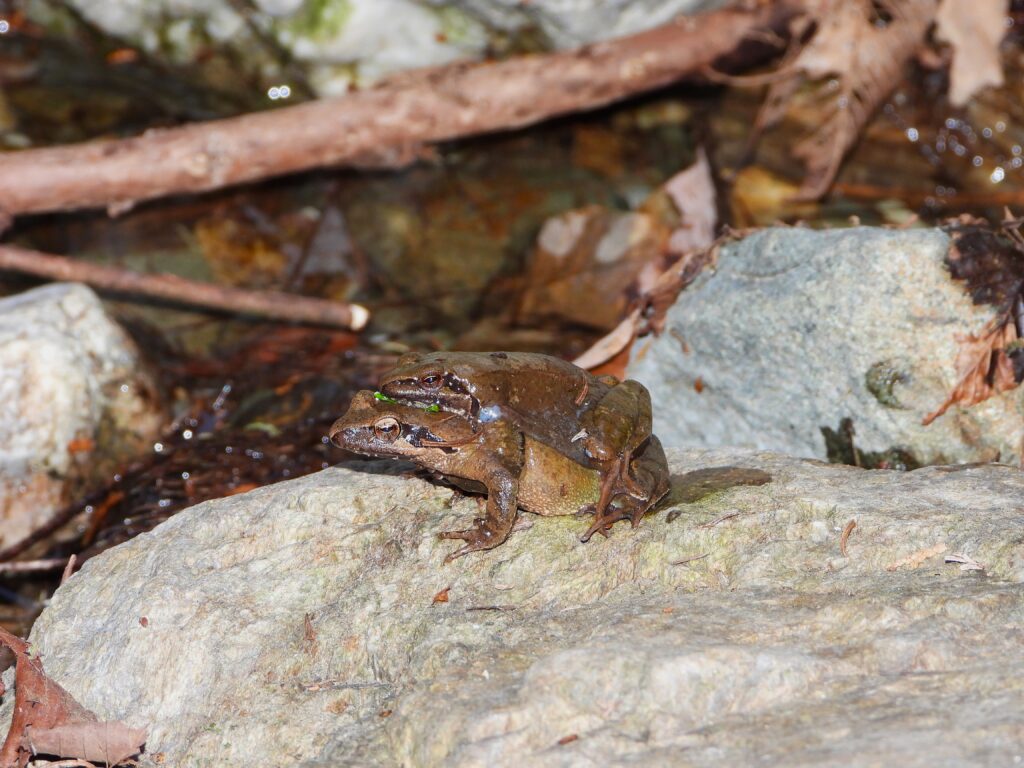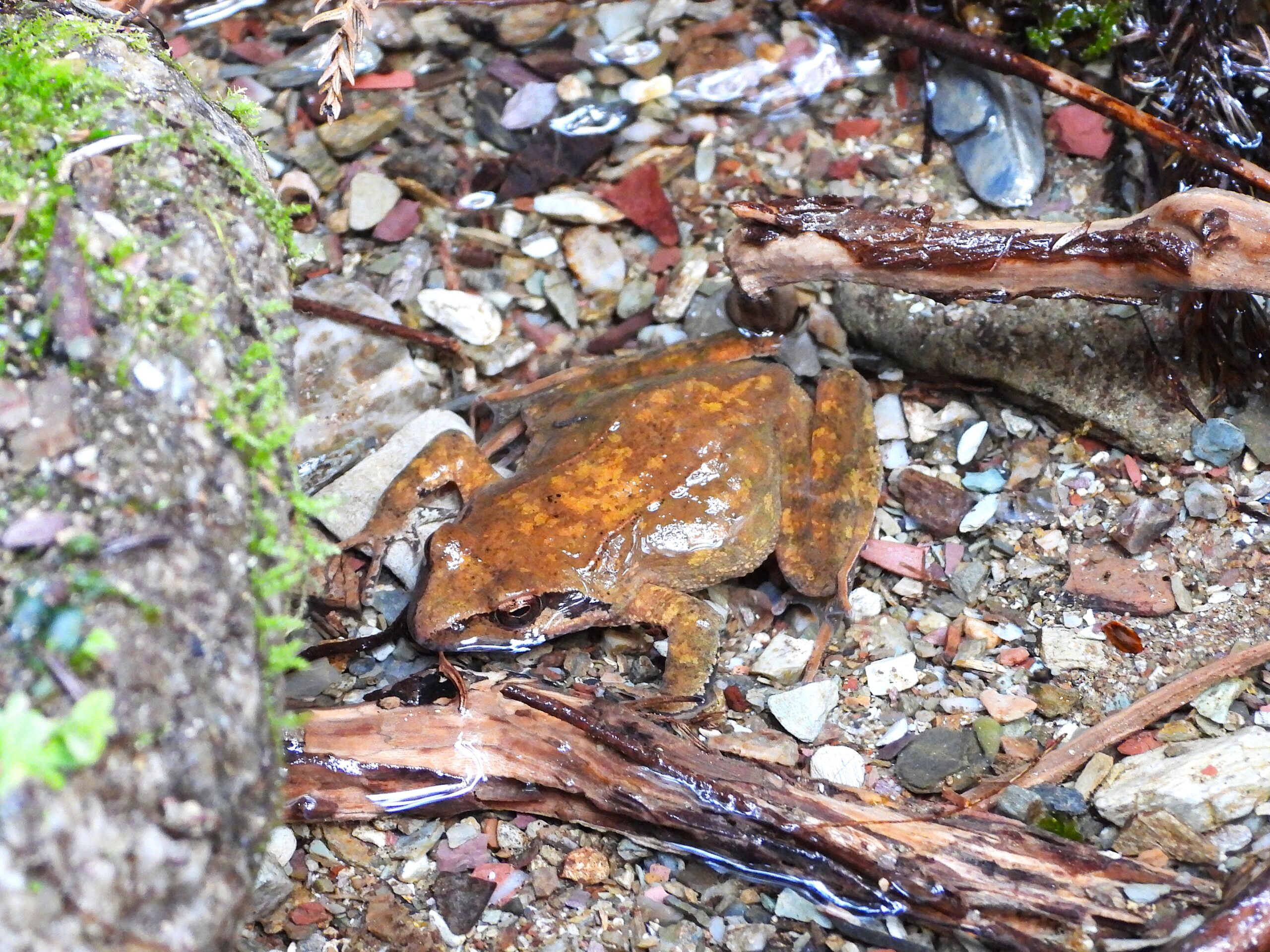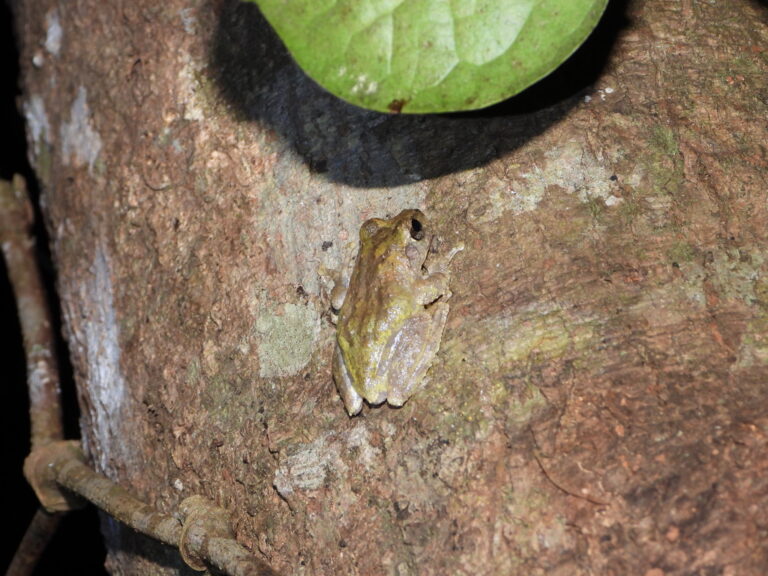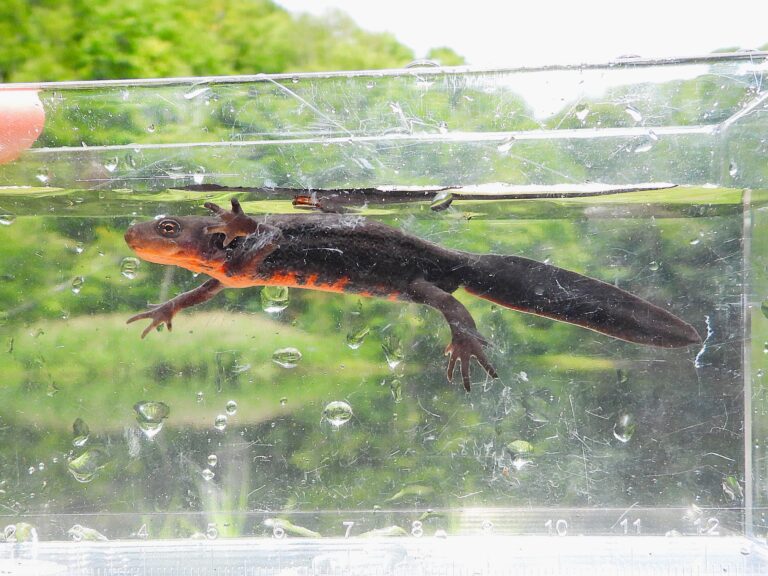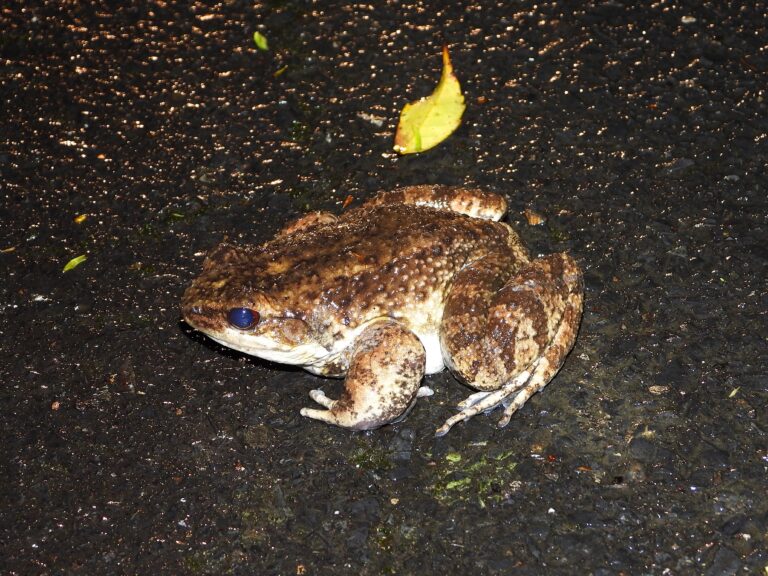Stream Brown Frog (Rana sakuraii) – Wildlife of Japan
Introduction
The Stream Brown Frog is an amphibian endemic to Japan, adapted to life in cold, fast-flowing mountain streams. It’s well known for its synchronized late-winter breeding events, when large numbers migrate to streams as the snow begins to melt. The species is currently listed as Least Concern on the IUCN Red List.
Appearance
This medium-sized frog has a sturdy body, with males reaching 38–56 mm and females 43–60 mm in snout–vent length. It can be distinguished by its well-developed toe webbing and relatively indistinct tympanum (eardrum). The coloration is generally brown with subtle patterning that blends well with streambed stones.
Habitat & Distribution
The species inhabits clear, cool mountain streams in central Honshu, ranging from the Kanto and Chubu regions through Kinki and Hokuriku. It prefers forested valleys with shaded, unpolluted headwaters, and breeds in the main channels rather than stagnant pools.
Behavior
Adults migrate to streams in late autumn and often overwinter submerged among rocks under flowing water. Their seasonal movements and breeding are triggered by changes in temperature and day length. Despite their aquatic habits, they are most active near water’s edge at dusk.
Diet
Adults prey on small insects and other invertebrates along stream banks. Tadpoles feed on algae and biofilm growing on rocks, scraping the surface with their mouths.
Reproduction
Breeding occurs between February and April. Adults gather in fast-flowing sections of streams, laying eggs attached to submerged rocks. Each clutch contains large eggs (about 3.2–3.4 mm in diameter), among the biggest of any Japanese frog. Tadpoles develop in the current and metamorphose by early summer.
Similar Species & ID Tips
Easily confused with Rana tagoi (Tago’s Brown Frog). R. sakuraii has more extensive toe webbing, breeds in open stream channels, and shows a less distinct tympanum. R. tagoi, in contrast, often breeds in underground seeps or small springs. Distribution ranges and breeding sites are reliable identification clues.
Conservation
The species is not currently endangered, but it is vulnerable to environmental changes such as dam construction, stream channelization, and water pollution. Preserving shaded, natural stream habitats is crucial for its survival.
Author’s Impression
Many people associate frogs with ponds or rice paddies, but this species lives in flowing mountain streams — a rare lifestyle among amphibians. When I turned over a rock in a mountain brook, I found one calmly sitting, blending perfectly into the current. Among the Tago’s frog group, this one feels most deeply connected to the stream itself.
